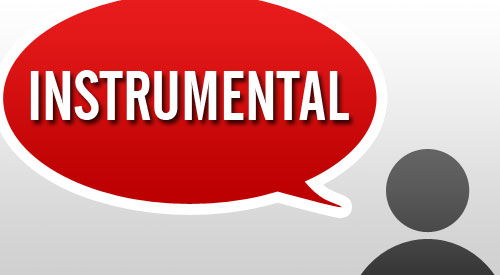The two main meanings indicated by the instrumental case are company and means or instrument with which an action is performed. It can also express time, place, additonal information and quality.
Suffixes :
| sg. | pl. |
| m | |
| -om/-em: bulevar-om, momk-om Mark-om, Đorđ-em |
–ima: bulevar-ima, momc-ima |
| f | |
| -om: žen-om, devojk-om | –ama: žen-ama, devojk-ama |
| -i/-ju: reč-i / reč-ju | -ima: reč-ima |
| n | |
| –om/-em: pism-om, polj-em, ime-n-om |
–ima: pism-ima, polj-ima, ime-n-ima |
Usage
Nouns / noun phrases in the instrumental used with the preposition sa can denote:
1) Company (with verbs expressing an action which requires at least two people to be performed). This is given as the answer to the question: S(a) kim?
e.g. S kim ideš u bioskop? Sa prijateljem.
2) Additional information. It’s given as the answer to the question: S(a) čime?
e.g. Sa čime je burek? Sa sirom / jabukama.
3) Quality. It’s given as the answer to the question:
Kakav?(sg.m.) Kakva?(sg.f.) Kakvo?(sg.n.) Kakve?(pl.m.) Kakve?(pl.f.) Kakva?(pl.n.)
e.g. Kakvu kafu piješ? Pijem kafu sa šećerom. Kakve žene voliš? Volim žene sa plavom kosom.
The instrumental case denoting means or instrument by which an action is performed is used without a preposition. It is given as the answer to the question: Čime?
e.g. Čime ideš na posao? Idem autobusom.
Čime pišeš pismo? Pišem olovkom.
The instrumental case denoting place can be expressed:
1) Without prepositions. It is given as the answer to the question: Kuda?
e.g. Kuda se šetaš? Šetam se gradom. Kuda ideš? Idem ulicom.
2) With the prepositions pred, nad, pod, među, za. It is given as the answer to the question: Gde?
e.g. Gde se nalaziš? Pred kućom. Gde su knjige? Pod jastukom.
Gde se sakrilo sunce? Među oblacima.

